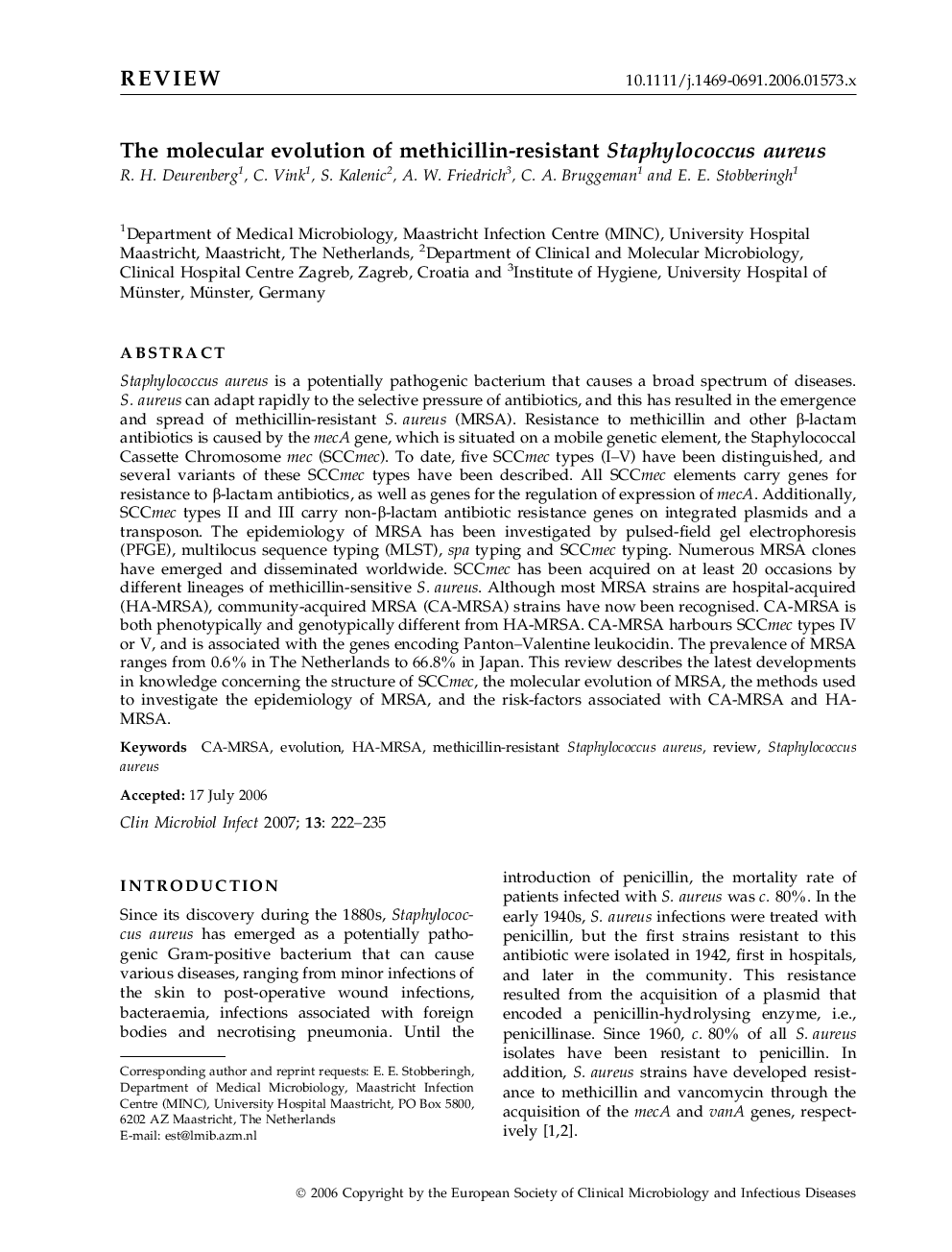| Article ID | Journal | Published Year | Pages | File Type |
|---|---|---|---|---|
| 6131367 | Clinical Microbiology and Infection | 2007 | 14 Pages |
Abstract
Staphylococcus aureus is a potentially pathogenic bacterium that causes a broad spectrum of diseases. S. aureus can adapt rapidly to the selective pressure of antibiotics, and this has resulted in the emergence and spread of methicillin-resistant S. aureus (MRSA). Resistance to methicillin and other β-lactam antibiotics is caused by the mecA gene, which is situated on a mobile genetic element, the Staphylococcal Cassette Chromosome mec (SCCmec). To date, five SCCmec types (I-V) have been distinguished, and several variants of these SCCmec types have been described. All SCCmec elements carry genes for resistance to β-lactam antibiotics, as well as genes for the regulation of expression of mecA. Additionally, SCCmec types II and III carry non-β-lactam antibiotic resistance genes on integrated plasmids and a transposon. The epidemiology of MRSA has been investigated by pulsed-field gel electrophoresis (PFGE), multilocus sequence typing (MLST), spa typing and SCCmec typing. Numerous MRSA clones have emerged and disseminated worldwide. SCCmec has been acquired on at least 20 occasions by different lineages of methicillin-sensitive S. aureus. Although most MRSA strains are hospital-acquired (HA-MRSA), community-acquired MRSA (CA-MRSA) strains have now been recognised. CA-MRSA is both phenotypically and genotypically different from HA-MRSA. CA-MRSA harbours SCCmec types IV or V, and is associated with the genes encoding Panton-Valentine leukocidin. The prevalence of MRSA ranges from 0.6% in The Netherlands to 66.8% in Japan. This review describes the latest developments in knowledge concerning the structure of SCCmec, the molecular evolution of MRSA, the methods used to investigate the epidemiology of MRSA, and the risk-factors associated with CA-MRSA and HA-MRSA.
Keywords
Related Topics
Life Sciences
Immunology and Microbiology
Microbiology
Authors
R.H. Deurenberg, C. Vink, S. Kalenic, A.W. Friedrich, C.A. Bruggeman, E.E. Stobberingh,
